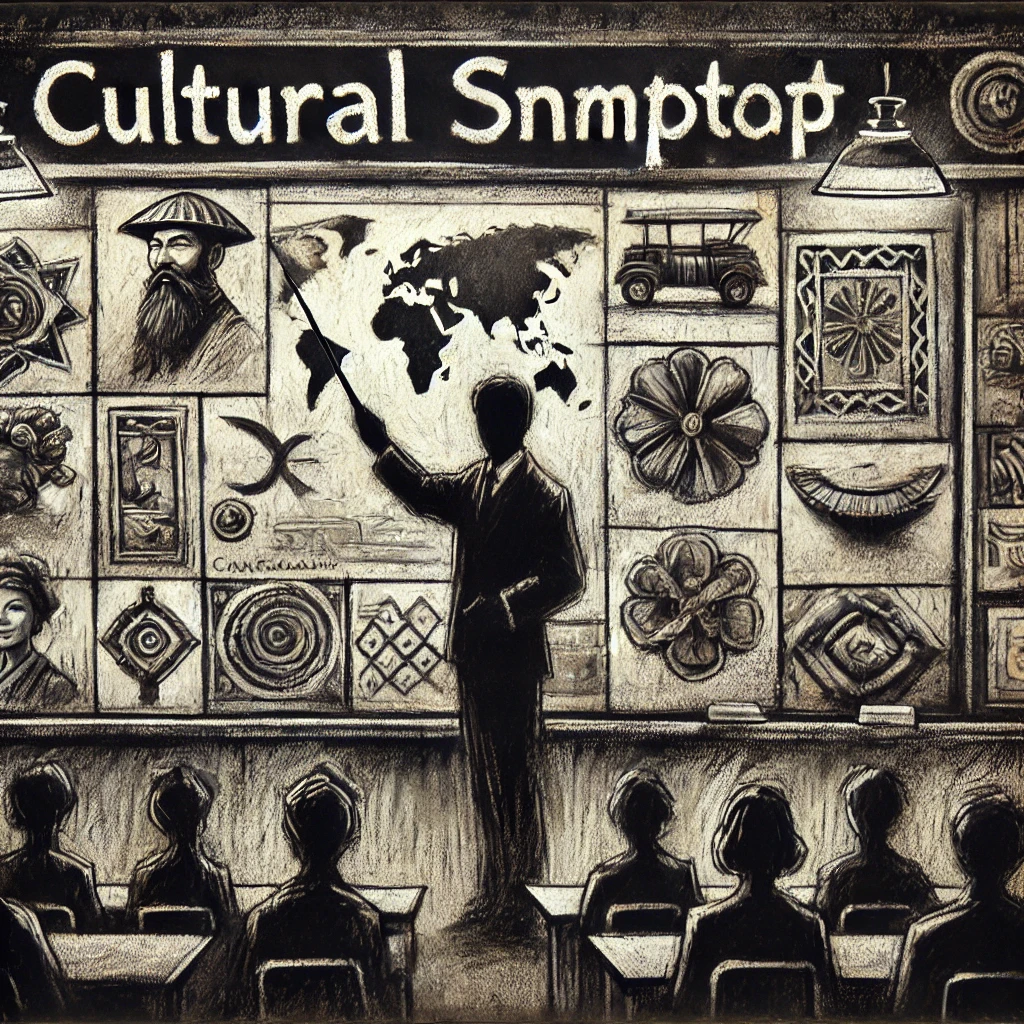Cultural Differences
Understanding cultural differences is essential in today’s globalized world. As you interact with people from various backgrounds, recognizing and respecting cultural differences will help you communicate more effectively and build stronger relationships. This lesson will guide you through the nuances of different cultures, from communication styles to social norms, and how these differences can impact your interactions.

Learning goals
Recognize Cultural Differences: Understand key differences in communication styles, traditions, and social norms across cultures.
Enhance Cross-Cultural Communication: Learn how to adjust your communication approach based on cultural context.
Promote Cultural Awareness and Respect: Develop a mindset of curiosity and respect towards other cultures.
Understanding Cultural Differences
Communication Styles
Direct vs. Indirect Communication:
Direct Communication: In cultures like the United States or Germany, people tend to be straightforward and explicit in their communication. They value clarity and prefer to express their thoughts and intentions clearly.
- Real-Life Example: In a business meeting, an American colleague might say, “I disagree with your approach because it doesn’t meet the project’s goals.”
Indirect Communication: In cultures such as Japan or India, people may communicate in a more nuanced and implicit way, often relying on context and non-verbal cues to convey their message. This approach is often used to maintain harmony and avoid confrontation.
- Real-Life Examples: In Japan, instead of directly saying “no,” a person might say, “It would be difficult,” indicating disagreement without explicitly refusing.
- In the United States, people might express their opinions openly and clearly, while in Japan, communication may be more subtle, with more emphasis on reading between the lines.
Social Norms and Etiquette
Formality vs. Informality:
- Formality: In cultures like South Korea or France, social interactions often adhere to formal protocols, especially in professional or public settings. Titles, honorifics, and polite forms of address are commonly used.
- Real-Life Example: In South Korea, addressing someone by their title and last name (e.g., “Director Kim”) is a sign of respect, especially in business settings.
- Informality: In cultures such as Australia or the Netherlands, social interactions tend to be more casual and informal, even in professional environments. People might quickly transition to using first names and casual language.
- Real-Life Example: In Australia, it’s common for colleagues to address each other by their first names, even if they’ve just met.
Non-Verbal Communication
Body Language and Gestures:
- Gestures: The meaning of gestures can vary widely across cultures. For example, a gesture that is positive in one culture might be considered offensive in another.
- Real-Life Example: The “thumbs up” gesture is positive in many Western cultures, indicating approval or agreement. However, in some parts of the Middle East and South America, it can be considered rude or offensive.
- Eye Contact: In some cultures, maintaining eye contact is a sign of confidence and honesty, while in others, it might be seen as confrontational or disrespectful.
- Real-Life Example: In the United States, maintaining eye contact during a conversation is often interpreted as a sign of attentiveness and sincerity. In contrast, in some East Asian cultures, avoiding eye contact may be a way to show respect, especially towards authority figures.
Cultural Values and Beliefs
Individualism vs. Collectivism:
- Individualism: Cultures that value individualism, like those in the United States or Canada, emphasize personal achievements, independence, and individual rights.
- Real-Life Example: In the United States, it is common for individuals to be encouraged to express their personal opinions and pursue their own goals, even if they differ from those of the group.
- Collectivism: Cultures that value collectivism, such as those in China or Mexico, prioritize group harmony, family ties, and collective well-being over individual desires.
- Real-Life Example: In China, decisions often consider the impact on the family or community rather than just the individual. For instance, career choices may be influenced by what benefits the family most.
Traditions and Celebrations
Understanding and Participating in Cultural Traditions:
- Respect for Traditions: Engaging with and respecting cultural traditions is a key part of building cross-cultural relationships. This might include understanding the significance of religious holidays, traditional ceremonies, or cultural customs.
- Real-Life Example: During Ramadan, a Muslim-majority country might observe fasting from dawn to dusk. Understanding and respecting this tradition, such as by not eating in front of fasting colleagues, is crucial for maintaining positive relations.
- Participating in Celebrations: Being open to participating in cultural celebrations can enhance mutual understanding and respect.
- Real-Life Example: Joining in a Diwali celebration in India by wearing traditional clothing and participating in the festivities can show respect and interest in the local culture.
Real-Life Situations Involving Cultural Differences

Business Meetings:
- Situation: You are attending a business meeting with colleagues from different cultural backgrounds. During the discussion, you notice that some colleagues are very direct in expressing their opinions, while others are more reserved and use indirect language.
- Challenge: Understanding these differences is key to effective communication. For example, a direct approach might be seen as assertive and efficient by some, but could be perceived as rude or aggressive by others.
- Solution: Adapt your communication style based on the cultural context of your colleagues. Show sensitivity to those who prefer indirect communication by asking open-ended questions and giving them space to express their thoughts.
Cross-Cultural Negotiations:
- Situation: You are negotiating a contract with a partner from another country. You notice that your partner places a lot of emphasis on building a personal relationship before discussing business terms.
- Challenge: In some cultures, trust and relationships must be established before any business dealings. Rushing into business without this foundation could jeopardize the deal.
- Solution: Take time to build rapport with your partner through social interactions, such as sharing meals or discussing non-business topics. Respect their approach to negotiation by demonstrating patience and a willingness to understand their cultural practices.
Living Abroad:
- Situation: You move to a new country for work or study and encounter cultural differences that affect your daily life, such as different attitudes towards time, personal space, or social interactions.
- Challenge: Adapting to a new cultural environment can be challenging, especially when your own cultural norms are very different from those in the new country.
- Solution: Learn about the local culture through observation, asking questions, and participating in cultural events. Be open-minded and flexible, and try to integrate some of the local customs into your own life to ease the transition.
Social Media Interactions:
- Situation: You engage with people from various cultures on social media platforms. You notice that certain jokes or comments that are acceptable in your culture are received differently by people from other cultures.
- Challenge: Social media is a global platform where cultural misunderstandings can easily occur, especially when humor, sarcasm, or idioms are involved.
- Solution: Be mindful of the cultural diversity of your audience when posting or commenting on social media. Avoid using culturally specific humor or phrases that might be misinterpreted, and consider how your words might be perceived by people from different backgrounds.
Understanding cultural differences is crucial in these real-life situations as it helps to avoid misunderstandings, build stronger relationships, and communicate more effectively. By developing cultural awareness and sensitivity, you can navigate cross-cultural interactions with greater confidence and success.
Understanding Cultural Differences
In “The Danger of a Single Story,” Chimamanda Ngozi Adichie powerfully explores how narratives shape our perceptions of others. Discover the profound impact of understanding multiple perspectives to avoid misconceptions and stereotypes.
Learning activities
EGB
Cultural Snapshot Presentation
Objective: Explore and present key cultural aspects of a chosen country, focusing on communication styles, social norms, and traditions.
Instructions:
- Choose a country that interests you. Research its communication style, social norms, and one unique cultural tradition.
- Create a short presentation (3-5 minutes) summarizing your findings.
- Share your presentation with the class, highlighting the most interesting cultural differences you discovered.
Gamification Element: Earn Krugs for thorough research, creativity in presentation, and how well you explain the cultural differences. The best presentations receive bonus Krugs.
Example: Presenting oneself in Japan, discussing the importance of bowing in greetings and the tradition of the tea ceremony.

Cultural Role-Play
Objective: Practice adjusting communication styles based on different cultural contexts.
Instructions:
- In pairs, choose two different cultures and research their communication styles.
- Role-play a conversation where each person uses the communication style of their chosen culture.
- After the role-play, discuss how the cultural differences influenced the conversation and what you learned from the experience.
Gamification Element: Earn Krugs for staying in character and accurately portraying the communication styles. Bonus Krugs for insightful reflections after the role-play.
Example: Role-play a conversation between someone from the United States (direct communication) and someone from Japan (indirect communication).

Cultural Quiz Show
Objective: Test your knowledge of cultural differences through a fun, competitive quiz.
Instructions:
- You will be divided into teams. The teacher will ask questions related to cultural differences, including communication styles, social norms, and traditions.
- Teams will buzz in to answer the questions. Correct answers earn points, while incorrect answers allow the other teams to steal points.
- The team with the most points at the end of the quiz wins.
Gamification Element: Earn Krugs based on the points your team scores. Bonus Krugs for answering particularly challenging questions.
Example Question: “In which culture is it considered impolite to refuse a cup of tea when offered?”

BGU
Cultural Debate
Objective: Develop critical thinking and cross-cultural communication skills by debating cultural norms and practices.
Instructions:
- You will be assigned a cultural practice or norm (e.g., arranged marriages, public displays of affection, gift-giving customs).
- In pairs or small groups, debate the cultural practice, considering both the cultural context and your own perspective.
- Present your debate to the class, focusing on understanding and respecting different cultural viewpoints.
Gamification Element: Earn Krugs for well-reasoned arguments and respectful engagement with opposing views. Bonus Krugs for effectively incorporating cultural research into your debate.
Example: Debate the pros and cons of arranged marriages in cultures where this practice is common.

Cultural Simulation Game
Objective: Experience the challenges of cross-cultural communication through a simulation game.
Instructions:
- You will be divided into small groups, each representing a different culture with specific communication styles and social norms.
- Each group will interact with others, attempting to complete a series of tasks (e.g., negotiating a trade, or planning an event) while adhering to their cultural rules.
- After the simulation, discuss the challenges you faced and what you learned about cross-cultural communication.
Gamification Element: Earn Krugs for successful completion of tasks while respecting cultural differences. Bonus Krugs for creative problem-solving and effective communication.
Example: One group may represent a culture that values indirect communication, while another represents a culture that values directness.

Cultural Exchange Project
Objective: Deepen your understanding of a specific culture through an in-depth research project and presentation.
Instructions:
- Choose a culture that you are not familiar with and research its communication styles, social norms, values, and traditions.
- Create a detailed report and a presentation (5-7 minutes) on your findings.
- Present your project to the class, focusing on what surprised you and how you would approach communication differently in that culture.
Gamification Element: Earn Krugs for thorough research, insightful analysis, and a well-organized presentation. Bonus Krugs for presenting on a lesser-known culture or incorporating multimedia elements.
Example: Research and present on the cultural norms and communication styles in Ghana.

